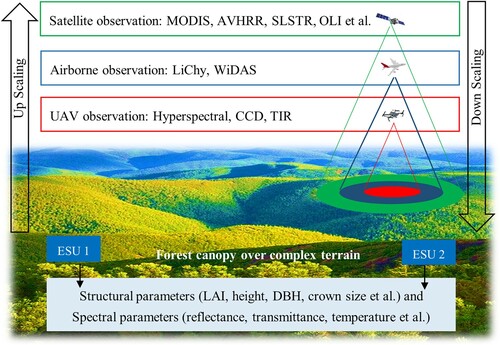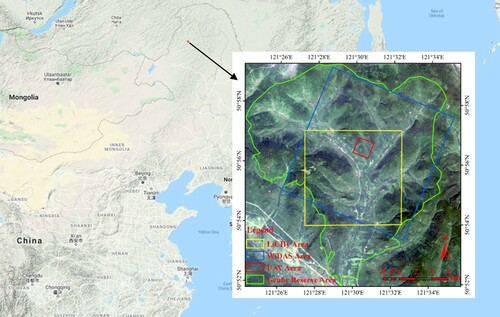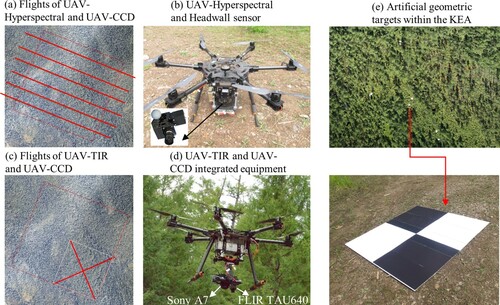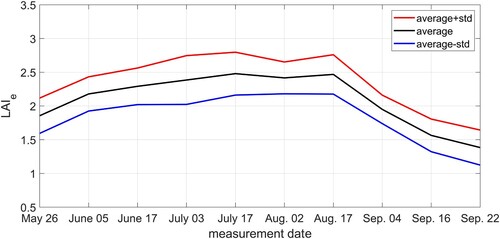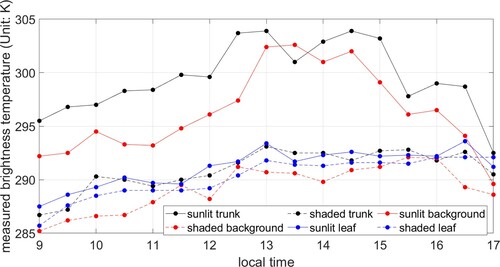Figures & data
Table 1. Summary of the FOREST experiment composition and measured parameters.
Table 2. Parameters of the LiCHy instruments.
Figure 3. Estimated KEA DSM from LiCHy-LiDAR measurement (a); estimated KEA DEM from DSM (b); reflectance image of the red band (656 nm) of the KEA obtained by the LiCHy-AISA Eagle II hyperspectral sensor (c); reflectance image of the NIR band (907 nm) of the KEA obtained by the LiCHy-AISA Eagle II hyperspectral sensor (d).
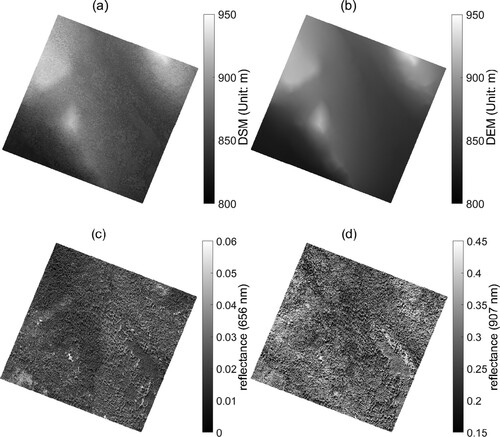
Figure 4. The WiDAS flight tracks (a) and the generated digital orthographic map of the KEA with spatial resolution equal to 0.4 m using Phase iXa 645DF camera (b).
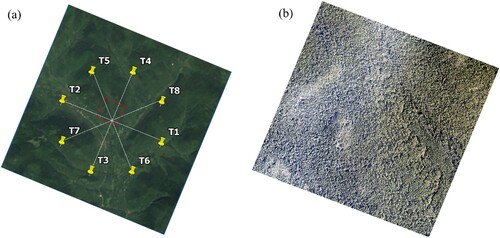
Table 3. Parameters of the WiDAS sensors with a flight height of 2000m.
Table 4. Parameters of three UAV sensors.
Figure 6. EVI histogram of the entire KEA (a) and twenty ESUs (b) in the growth stage of 2015, spatial locations (c) and the lateral photos (d) of twenty ESUs.
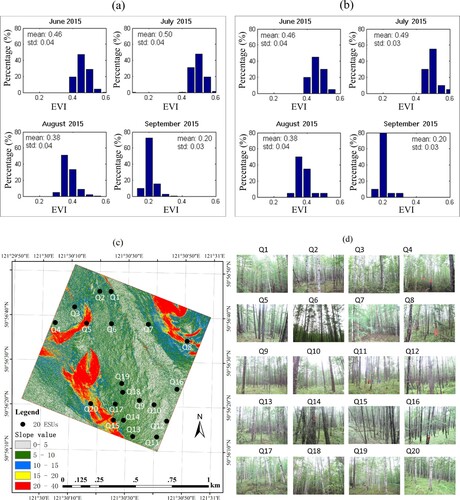
Figure 7. Average height and crown size of pine (a); the scatter plot between the tree height and DBH of pine (b); average height and crown size of birch (c); and the scatter plot between the tree height and DBH of birch (d).
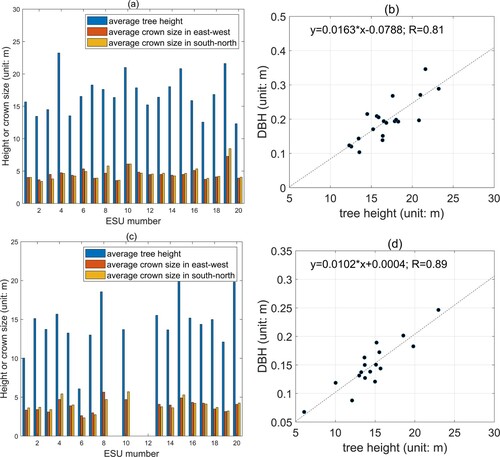
Figure 8. Different sampling approaches for Hemiview (a), LAI-2000 (b), LAISmart (c), PocketLAI (d), and Nikon D3000 camera (e).

Figure 10. Scatter plot between the in situ-measured FVC and the measured LAIe using LAIsmart in Aug. 02, 2016 (a); and the measured CI using TRAC in ESUs in Aug. 08, 2016 (b).
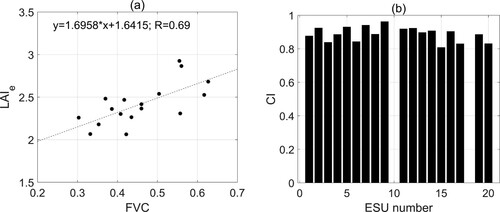
Figure 11. The measured reflectance of pine leaves (a), reflectance of white birch leaves (b), transmittance of white birch leaves (c) and reflectance of background (d). The red, blue, and black line represent the maximum, minimum and average value of the reflectance spectra, respectively.

Figure 13. Flowchart of a case study of large-scale canopy reflectance simulation using LESS for the evaluation of the reconstructed 3D scenes based on FOREST dataset.
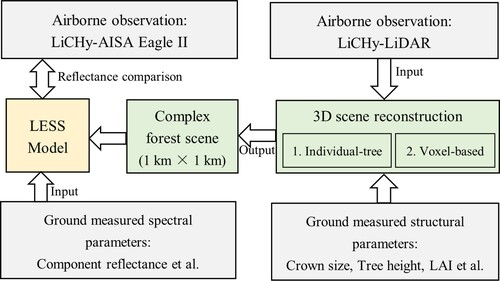
Figure 14. Estimated KEA CHM with spatial resolution of 0.5 m (i.e. DSM-DEM) (a) and KEA PAI with spatial resolution of 2 m from LiCHy-LiDAR (b); pine trees with heights of 7.2, 12.68, 18.42 m, respectively, and birch trees with heights of 13.2, 17.8 and 24.9 m, respectively (c); three typical cells with different amounts of leaves with leaf area volume density (LAVD) of 0.5, 1.5 and 2.5, respectively (d); reconstructed 3D scene using individual-tree approach (e); reconstructed 3D scene using voxel-based approach (f).
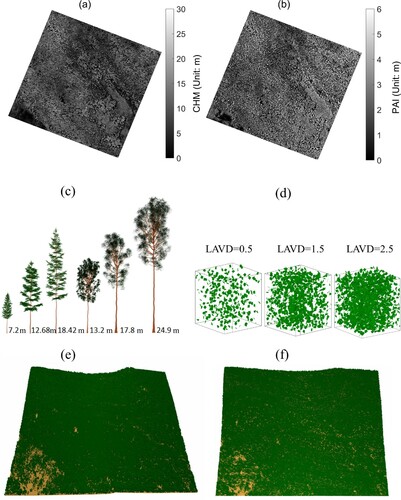
Figure 15. LESS simulated image of the red band (a) and the NIR band (b) using the individual-tree approach; LESS simulated image of the red band (c) and the NIR band (d) using the voxel-based approach; histogram of the reflectance bias of the LESS-simulated image of the red band (e) and the NIR band (f) using the individual-tree approach; histogram of the reflectance bias of the LESS-simulated image of the red band (g) and the NIR band (h) using the voxel-based approach.
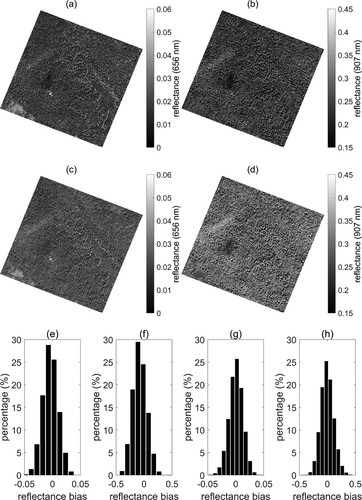
Figure 16. Scatter plot of the LiCHy image and LESS simulated image at 656 nm using the individual-tree approach (a); scatter plot of the LiCHy image and LESS simulated image at 907 nm using the individual-tree approach (b); scatter plot of the LiCHy image and LESS simulated image at 656 nm using the voxel-based approach (c); scatter plot of the LiCHy image and LESS simulated image at 907 nm in the voxel-based approach (d).
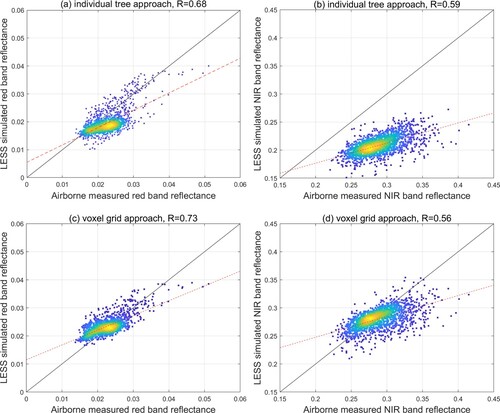
Data availability statement
The data that support the findings of this study are available from the first author ([email protected]) or the corresponding author ([email protected]), upon reasonable request. Part of the dataset can be downloaded from the website of the National Tibetan Plateau Data Center of China (http:// data.tpdc.ac.cn/en/)

